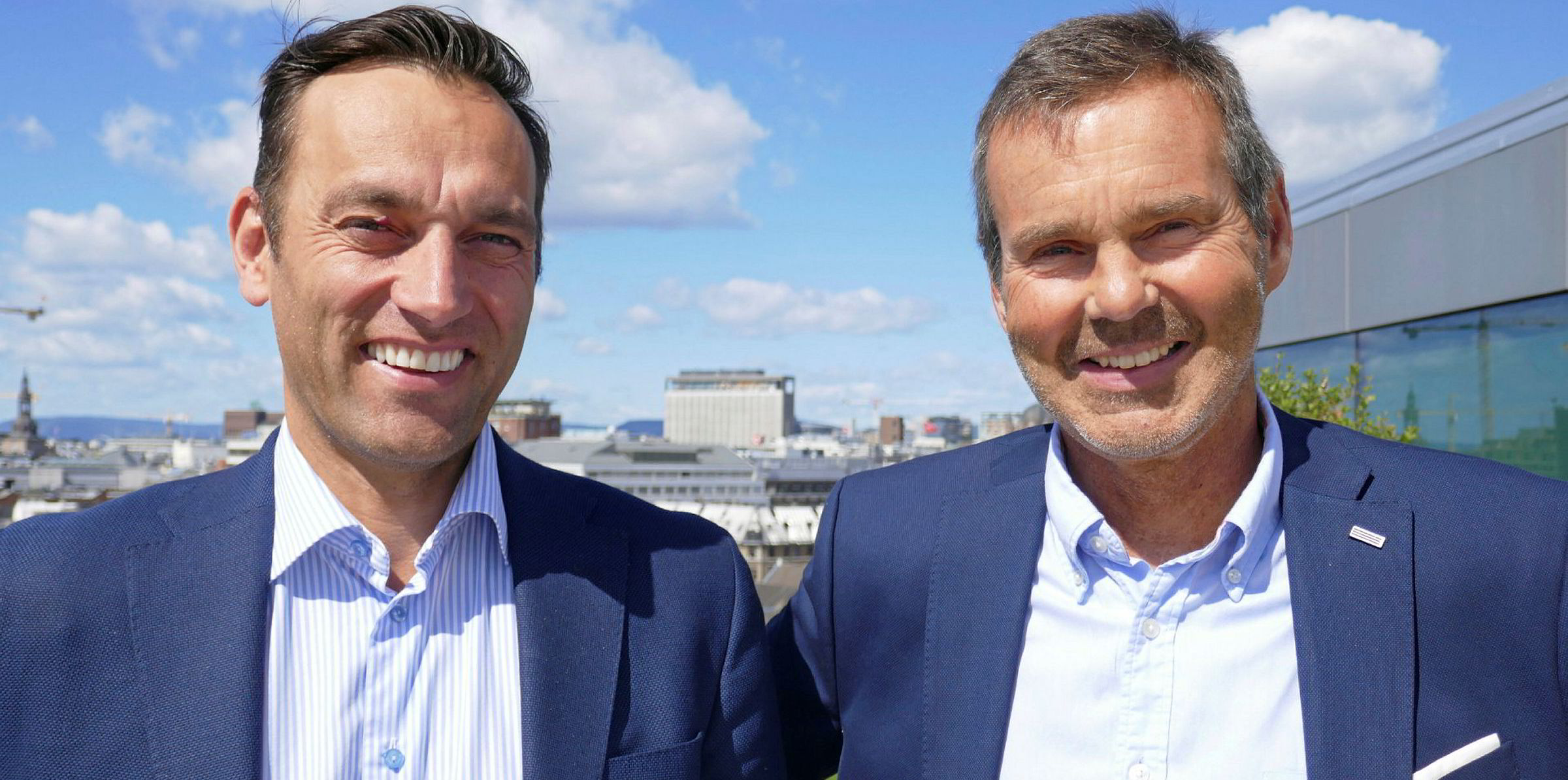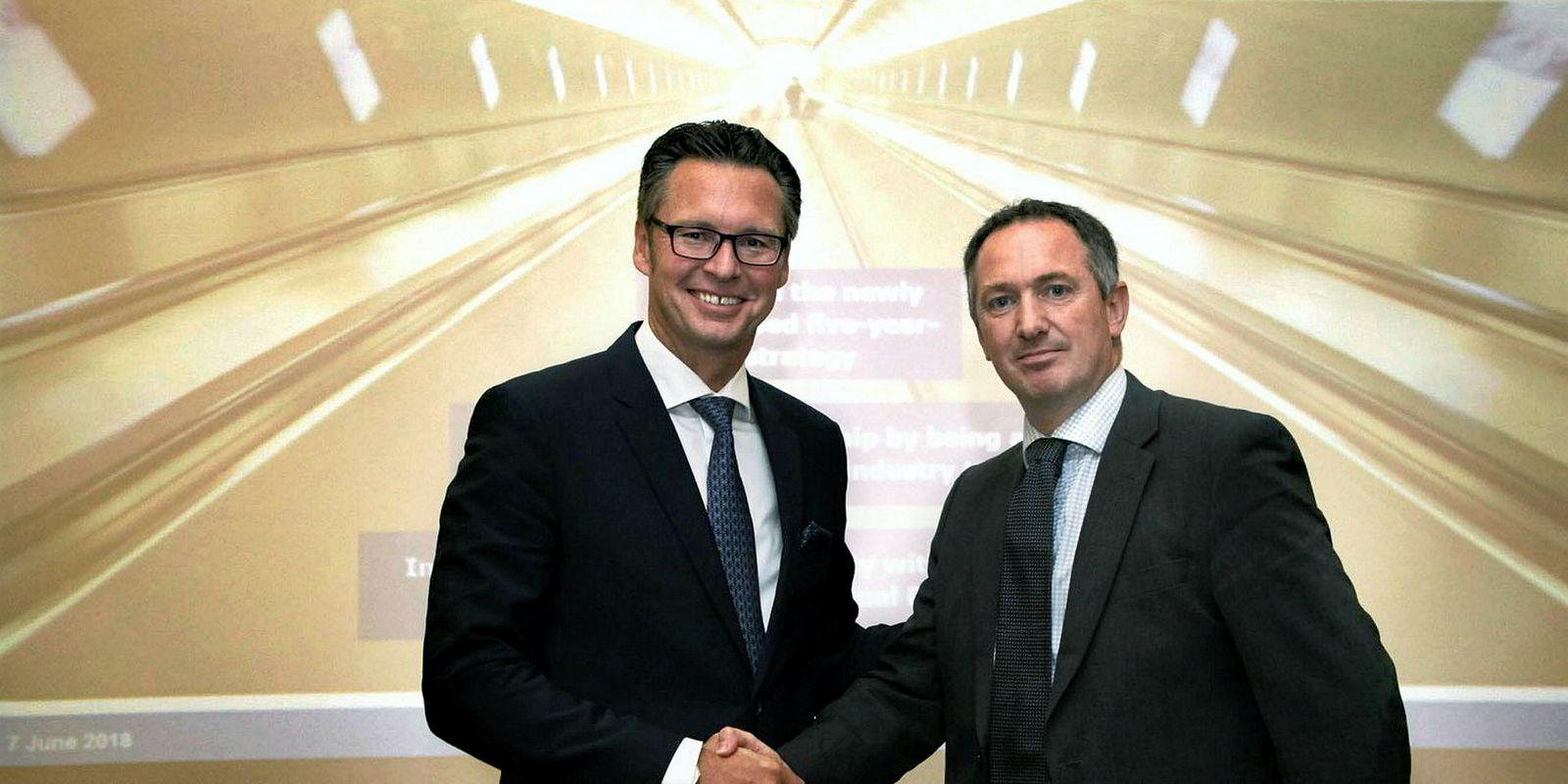VesselMan chief executive Glenn Edvardsen and chief operating officer and founder Stig Linna estimate that shipowners globally are forced to carry out about 20,000 or more dry-dockings, costing in the region of $75bn.
So they see the cloud-based software for dry-docking of their Oslo-based technology company, which has already signed up shipowners with around 300 vessels in total, as a digital “no-brainer”: It simplifies, organises and cuts costs either for single projects or for entire fleets simultaneously.
Edvardsen and Linna tell TradeWinds that VesselMan's clients should expect significant savings for these regulatory dry-dockings but also for repairs and retrofitting, such as installing scrubbers or ballast-water treatment.
“In terms of saving money, it is the standardised process, the efficiency and the transparency, and we believe that an owner will be able to reduce costs by more than 10% on the dockings,” Linna says.
As a cloud-based project for collaboration, Linna says the software allows various yard bids to be compared and accepted, simplifies the work for vessel superintendents, and limits additional variation orders that may arise after a ship enters a dock.
“By reducing the preparation prior to going into dock, you can reduce the number of days off hire and you can also cut the cost when you combine purchasing, because you have a docking plan where everyone can see the whole status of a project,” Edvardsen adds.
The transparency of the system also helps owners check to see if repair yards have attempted to cut corners, he says.
Complex dry-dockings traditionally have been paper-intensive projects with reams of work orders, and Edvardsen says these are largely still planned and managed with outdated methods using software such as Microsoft Excel and Word.
VesselMan, on the other hand, is designed to give a bird’s-eye view and integration of a vessel dry-docking to all the stakeholders, such as shipowners, yards, contractors, suppliers and vessel inspectors. Edvardsen says yard quotes are received directly into the system, compared, accepted and executed, with all parties working to the same specifications.
While serving as a project-management tool, the software gives a total live overview of all parts of the process, including whether the project is on budget and the estimated time of departure for the ship to re-enter the market.
Basically, it’s about taking the way vessel management is done to the next level by using cloud-based collaboration
‘Effective collaboration’
“Basically, it’s about taking the way vessel management is done to the next level by using cloud-based collaboration,” Linna says. “That means that, as a fleet manager or as a CEO of a shipping company, you can actually provide a tool that ensures an effective way of collaborating, regarding all the technical operations, between the suppliers, spares makers, class societies and repair yards.”
VesselMan is customisable, based on how an owner prefers to run a project.
“We don’t tell the shipping company how they should be doing their dockings. We implement their processes and their way of doing it, either for one ship, several ships or the whole fleet,” Edvardsen says, adding that feedback from owners helps improve the system.
However, he explains that just last week he completed discussions with DNV GL for an agreement, putting that class society’s standards and best practices for dry-dockings as an option within the VesselMan software. He says he has been in dialogue with other societies, such as Lloyd’s Register and ABS.
Additionally, VesselMan is part of Kongsberg’s digital platform, Kognifai, which it bills as an “open and scalable digital ecosystem” that serves as “an interconnected network of organisations, applications and assets, to support knowledge-sharing for all involved”.
Linna says that being a part of Kognifai is a key move for VesselMan because it allows the company to focus on the core business, while relying on Kongsberg for scalability and the paramount concern of digital security.
Edvardsen and Linna did not give their entire client list to TradeWinds, which they say collectively operate about 300 vessels. But they did reveal some well-known names already taking part, representing a wide-range of shipping sectors from tankers and gas carriers to offshore vessels and even cruiseships.
The list includes shipowners such as Utkilen, Petroleum Geo-Services, Avance Gas, Hoegh LNG and Transpetrol, as well as Wilhelmsen Ship Management. Solstad Farstad is said to be in a pilot programme.
“VesselMan gives us better control of cost, variation orders and progress on critical jobs,” Transpetrol fleet manager Eirik Sanderlien says.
Hoegh LNG maintenance superintendent Anders Tonnessens says: “The cloud-based integration saves us a lot of work and streamlines the docking project in a way that gives us much better control and transparency.”





